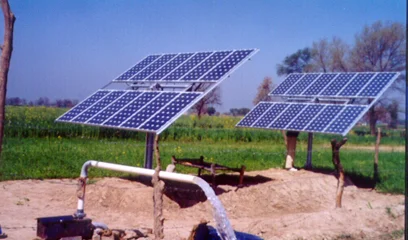Solar Water Pumps
A solar-powered pump is a Pump running on electricity generated by Photovoltaic panels or the thermal energy . It available from collected sunlight as opposed to grid electricity or diesel run water pumps. The operation of solar powered pumps is more economical mainly due to the lower. Operation and maintenance costs and has less environmental impact than pumps. It powered by an Internal combustion engine(ICE). Solar pumps are useful where grid electricity is unavailable and alternative sources (in particular wind) do not provide sufficient energy.
A photovoltaic solar powered pump system has three parts:
- the pump
- the controller
- solar panels.
The solar panels make up most (up to 80%) of the systems cost. The size of the PV-system is directly dependent on the size of the pump. The amount of water that is required (m³/d) and the solar irradiance available.
The purpose of the controller is twofold. Firstly, it matches the output power that the pump receives with the input power available from the solar panels. Secondly, a controller usually provides a low voltage protection. Whereby the system is switched off. If the voltage is too low or too high for the operating voltage range of the pump. This Solar Water Pumps increases the lifetime of the pump thus reducing the need for maintenance.
The Pump
Voltage of the solar pump motors can be AC (alternating current) or DC (direct current). Direct current motors . They are used for small to medium applications up to about 3 kW rating, and are suitable for applications . Such as garden fountains, landscaping, drinking water for livestock, or small irrigation projects. Since DC systems tend to have overall higher efficiency levels than AC pumps of a similar size, the costs are reduced as smaller solar panels can be used.
Finally, if an alternating current solar pump is used, an inverter is necessary that changes the direct current from the solar panels into alternating current for the pump. The supported power range of inverters extends from 0.15 to 55 kW and can be used for larger irrigation systems. However, the panel and inverters must be sized accordingly to accommodate the inrush characteristic of an AC motor.




